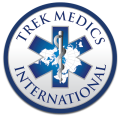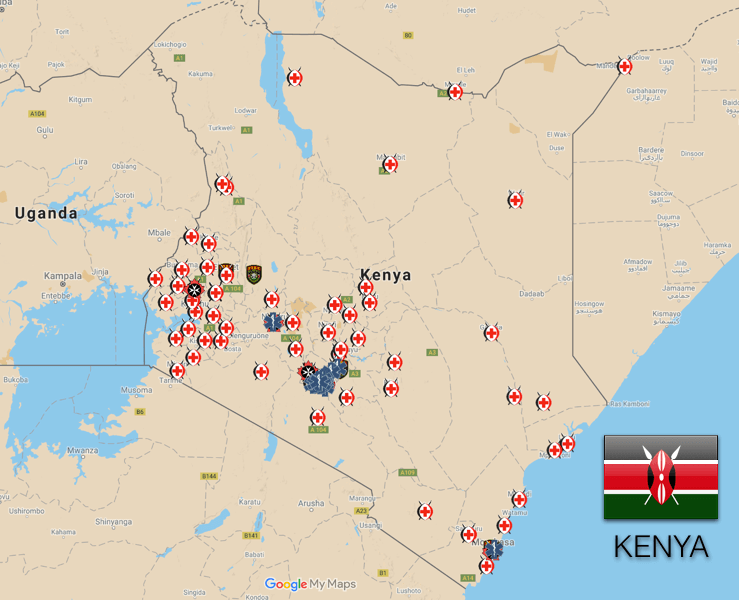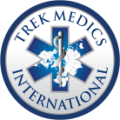AT-A-GLANCE
DIAL 999 TO CALL AN AMBULANCE IN KENYA
- But you may want to check out some of these other numbers in our Kenya EMS Coverage Map to have just in case
- Kenyan emergency care has come farther than the majority of African EMS systems, but there’s still a long ways to go
- While St. John Ambulance and the Kenyan Red Cross are recognized providers of emergency medical services in Kenya, “Most patients are transferred to hospitals by private means, for instance by car, truck, or taxi, among others. Few present to emergency centers (ECs) by ambulance (whether truck or aircraft) given their scarcity and the lack of a well-connected, reliable central dispatch system.” (Wachira, 2011)
- The advent of private ambulance services could be helping to off-set the burden of care on public ambulance providers, but could also be taking their only paying customers, too
HOW CAN I CALL AN AMBULANCE IN KENYA?
DIAL 999 TO CALL AN AMBULANCE IN KENYA
999 is the toll-free number for emergency services in Kenya, including for ambulance, fire and EMS, according to the government. However, there is no guarantee that calling this number will result in finding rapid access to trained prehospital providers outside of city centers. Please consult our Kenya EMS Coverage Map to find other ambulance providers in your area.
No. Calling 999 will likely only be possible in Nairobi. See below for other numbers in and out of Nairobi.
Regarding public ambulance services: “Among key interviewers, there was discrepancy regarding community awareness of the emergency phone number: Some thought the community was generally aware that a national emergency number was available; others thought that the majority of community members did not have knowledge of this number. Among participants, very few respondents reported an awareness of an emergency phone number. Of those who were aware, the emergency phone number was described as “inefficient,” “never in use,” and “does not go through.” Key interviewers reported that non-government emergency telephone numbers existed often operated by private first response organizations. However, none of the participants were aware of or had used these resources.” (Wesson 2015)
Regarding private ambulance services: According to a presentation by E-Plus, their private ambulance service is accessible by dialing 1199, and currently offers:
- A fleet 0f 128 “ambulances across Kenya in 74 stations
- 116 Basic Life Support (BLS) units
- 12 Advanced Life Support (ALS) units
- Sub-contracting 52 ambulances to 6 counties
On average, E-Plus reports receiving 580 calls per day.
GROUND AMBULANCE IN KENYA
KIAMBU
- MediCross:
- Ananas Mall: +254 797 106 685
- Juja City Mall: +254 722 745 722
MOMBASSA
- XFOR Security Solutions Ltd: +254 20 200 9999; Email: [email protected]
NAIROBI
- Official public access numbers:
- 999
- 020-2222181
- 020-2222182
- 020-2344599
- AAR Healthcare
- Central: +254 731 191 070
- Donholm: +254 733 881 420
- Embakasi: +254 733 888 259
- Kasarani: +254 731 191 076
- Mountain Mall: +254 733 888 258
- Ngong Road: +254 730 655 000
- Sarit Center: +254 731 191 064
- Avenue Rescue Services: +254 203 743 858
- E-Plus Ambulance: 1199 / +254 700 395 395 or 738 395 395
- E-Plus reports to have “a fleet of 128 ambulances all over the country … spread over 74 stations”
- Precise locations of those ambulances however were not located online, though many are presumed to be housed in Kenyan Red Cross stations given the formal business arrangement between the two providers
- KK Security: +254 203 882 920
- Medicross:
- Gateway Mall: +254 730 730 000
- Ngong Road:+254 797 106 676
- Nairobi West Hospital: +254 202 320 705
- Swift Paramedics: 254 722 816 138
- XFOR Security Solutions Ltd: +254 202 009 999
NAKURU
- MediCross: +254 717 118 737
AIR AMBULANCE IN KENYA
NAIROBI (Wilson Airport)
- AMREF Flying Doctors: +254 206 992 299
- Intensive Care Air Ambulance Ltd: +254 722 600 600
- Phoenix Aviation: +254 204 945 500
Though quality of care and training is difficult to determine, Kenya has multiple training centers offering a range of course for multiple types of first responders:
- Prehospital Emergency Care
- St. John Ambulance Kenya
- AAR Healthcare (Nairobi)
- Firefighters
- Duo-Tech Fire Services (Nairobi)
- Jolemac Fire (Nairobi)
- Intel Fire Goup (Thika)
“According to the 2004 Service Provision Assessment (SPA), about 9 out of 10 primary hospitals, 6 out of 10 health centres, and very few dispensaries under government management had on-site transport available for emergencies.15 On the other hand, districts reported that close to 86% of the NGO and private health facilities had on-site transport available for emergencies. …To compound the problem only 16% of health facilities across the country have and use referral forms essential to the communication of vital patient information15; half of facilities in Nairobi province have referral forms, in contrast to only 1% of in North Eastern province.” (Wachira, 2012)
There are 6,600 health facilities across Kenya, 51% of which are in the public sector (Wachira, 2011)
St. John Ambulance offers Ambulance Coverage insurance at annual rates (read more here)
E-Plus offers two plans:
- Family membership @kes.6000/per year
- Individual membership @kes.3000/ per year
ADDITIONAL INFO
Common Emergencies in Kenya
- Road Traffic Injuries
- Inter-Personal Violence
- Hurricanes
- Drownings
- Zika Virus is also a risk in Kenya:
Alert – Level 2, Practice Enhanced Precautions
Read the CDC’s Zika Travel Notice for more info
Recommended Vaccinations for Kenya
According to the US Centers for Disease Control and Prevention (CDC), different groups of travelers will require different vaccinations for travel in Guatemala:
- All Travelers
- Measles-mumps-rubella (MMR) vaccine
- Diphtheria-tetanus-pertussis vaccine
- Varicella (chickenpox) vaccine
- Polio vaccine
- Your yearly flu shot
- Most Travelers
- Hepatitis A
- Typhoid
- Some Travelers
- Cholera
- Hepatitis B
- Malaria
- Meningitis
- Rabies
- Yellow Fever – “Yellow fever is a risk in certain parts of Kenya, so CDC recommends the yellow fever vaccine for travelers 9 months of age or older to these areas.
- Country entry requirement: The government of Kenya requires proof of yellow fever vaccination if you are traveling from a country with risk of yellow fever (this does not include the US – for complete list, see Countries with risk of yellow fever virus (YFV) transmission.”
Read more about travel in Kenya at the CDC website: https://wwwnc.cdc.gov/travel/destinations/traveler/none/kenya/ (Last accessed: Aug. 7, 2017)
Many Kenyan EMS professionals will point to the 1998 US Embassy bombings in Nairobi as the advent of formal emergency medical services in Kenya.
Kenyan Council of Emergency Medical Technicians (KCEMT) “was established in 2008 and is now the sole professional body setting national standards, regulating EMS training, and lobbying for formal recognition of EMTs in Kenya.” (Wachira, 2011)
The government also has an Emergency Services website which lists information on ambulance providers.
- Burke TF et al: “Emergency and urgent care capacity in a resource-limited setting: an assessment of health facilities in western Kenya.” BMJ Open. 2014;4(9):e006132.
- Matheka DM et al: “Road traffic injuries in Kenya: a survey of commercial motorcycle drivers.” Pan African Medical Journal. 2015; 21:17
- Wachira BW, Wallis LA, Geduld H. “An analysis of the clinical practice of emergency medicine in public emergency departments in Kenya.” Emerg Med J 2012;29:473-476.
- Wachira B et al: “The state of emergency care in the Republic of Kenya.” Afr J Emerg Med. 2011 Dec;1(4):160–165.
- Wesson HKH et al: “Trauma systems in Kenya: A qualitative analysis at the district level.” Qualitative Health Research
2015;25(5):589–599.
- Emergency Medicine Kenya Foundation (EMKF)
- “Kenya’s emergency medical services need major work” (TheConversation.com – Jan. 2017)
- Kenya Red Cross’ response to allegations of corrupt practices in leasing of ambulances (April 2015)
SCOREBOARD
% of Seriously Injured Patients Transported by Ambulance in Kenya, 2013
[Source: 2013 Global Status Report on Road Safety, WHO]
ROAD TRAFFIC INJURY DEATHS
(PER 100,000 POPULATION)
REPORTED HOMICIDES
(PER 100,000 POPULATION)
[Source: 2014 Global Status Report on Violence Prevention, WHO-UNDP]




